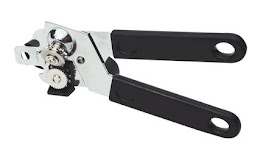Sink, Dish Washer

A sink also known by other names including sinker, washbowl,
hand basin and wash basin is a bowl-shaped plumbing fixture used for washing
hands, dishwashing, and other purposes. Sinks have taps (faucets) that supply
hot and cold water and may include a spray feature to be used for faster
rinsing. They also include a drain to remove used water; this drain may itself
include a strainer and/or shut-off device and an overflow-prevention device.
Sinks may also have an integrated soap dispenser. Many sinks, especially in
kitchens, are installed adjacent to or inside a counter.
History
The washstand was a bathroom sink made in the United States
in the late 18th century. The washstands were small tables on which were placed
a pitcher and a deep bowl, following the English tradition. Sometimes the table
had a hole where the large bowl rested, which led to the making of dry sinks.
From about 1820 to 1900 the dry sink evolved by the addition of a wooden
cabinet with a trough built on the top, lined with zinc or lead. This is where
the bowls or buckets for water were kept. Splashboards were sometimes added to
the back wall, as well as shelves and drawers, the more elaborate designs
usually placed in the kitchen.
How to Clean Up ?
Tips on caring for the dishwasher:
1. Check the shelves part of
the shelf rack in case there is dirt attached, if pepper clean with sponge then
rinse.
2. Avoid washing equipment or
objects containing oil, acids, rust, paint.
3. Do not open the dishwasher
when the machine is working.
4. For sharp and long equipment
such as a knife, preferably horizontally, and a sharp side facing up or down,
it is useful for the tool to be thoroughly cleaned into each part.
Can Opener

A can opener (in North American English and Australian
English) or tin opener (in British and Commonwealth English) is a device used
to open tin cans (metal cans). Although preservation of food using tin cans had
been practiced since at least 1772 in the Netherlands, the first can openers
were not patented until 1855 in England and 1858 in the United States. These
early openers were basically variations of a knife, though the 1855 design
continues to be produced. The first can opener consisting of the now familiar
sharp rotating cutting wheel was invented in 1870 but was considered too
difficult to operate for the ordinary consumer. A breakthrough design came in
1925 when a second, serrated wheel was added to hold the cutting wheel on the
ring of the can. This easy to use design has become one of the most popular can
opener models.
Around the time of World War II, several can openers were
developed for military use, such as the American P-38 and P-51. These featured
a robust and simple design where a folding cutting blade and absence of a
handle significantly reduced the opener size. Electric can openers were
introduced in the late 1950s and met with success. The development of new can
opener types continues with the recent addition of a side-cutting model.
How to Cleap Up ?
Just dish wash like we normal do it and dry if you
done to washing.
Knife Sherperner

Knife sharpening is the process of making a knife or similar
tool sharp by grinding against a hard, rough surface, typically a stone, or a
soft surface with hard particles, such as sandpaper. Additionally, a leather
razor strop, or strop, is often used to straighten and polish an edge.
The smaller the angle between the blade and stone, the
sharper the knife will be, but the less side force is needed to bend the edge
over or chip it off. The angle between the blade and the stone is the edge
angle – the angle from the vertical to one of the knife edges, and equals the
angle at which the blade is held. The total angle from one side to the other is
called the included angle – on a symmetric double-ground edge (a wedge shape),
the angle from one edge to the other is thus twice the edge angle. Typical edge
angles are about 20° (making the included angle 40° on a double-ground edge).
The edge angle for very sharp knives can be as little as 10 degrees (for a 20°
included angle). Knives that require a tough edge (such as those that chop) may
sharpen at 25° or more.
Different knives are sharpened differently according to
grind (edge geometry) and application. For example, surgical scalpels are
extremely sharp but fragile, and are generally disposed of, rather than sharpened,
after use. Straight razors used for shaving must cut with minimal pressure, and
thus must be very sharp with a small angle and often a hollow grind. Typically
these are stropped daily or more often. Kitchen knives are less sharp, and
generally cut by slicing rather than just pressing, and are steeled daily. At
the other extreme, an axe for chopping wood will be less sharp still, and is
primarily used to split wood by chopping, not by slicing, and may be reground
but will not be sharpened daily. In general, but not always, the harder the
material to be cut, the higher (duller) the angle of the edge.


No comments:
Post a Comment